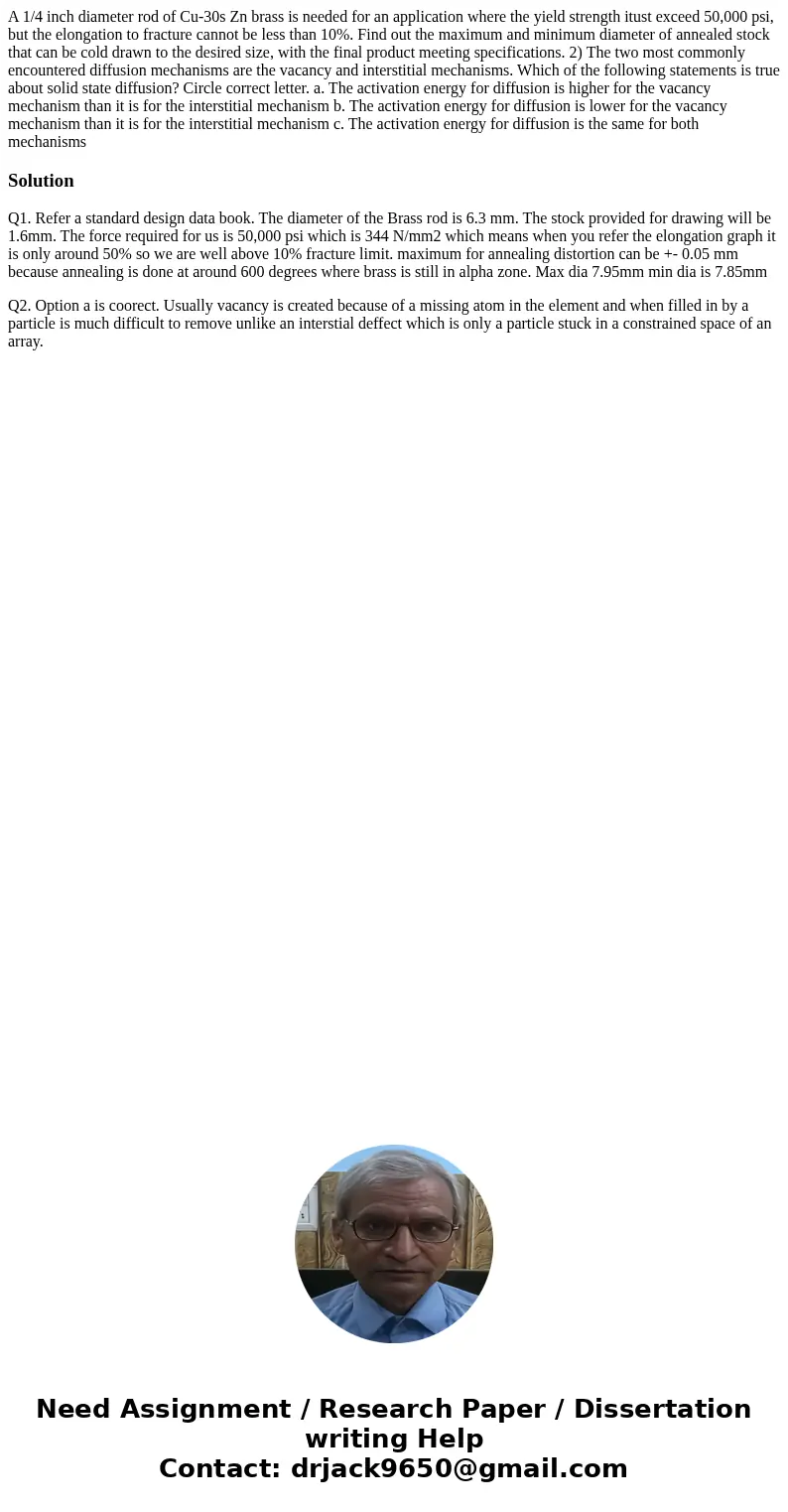A 14 inch diameter rod of Cu30s Zn brass is needed for an ap
A 1/4 inch diameter rod of Cu-30s Zn brass is needed for an application where the yield strength itust exceed 50,000 psi, but the elongation to fracture cannot be less than 10%. Find out the maximum and minimum diameter of annealed stock that can be cold drawn to the desired size, with the final product meeting specifications. 2) The two most commonly encountered diffusion mechanisms are the vacancy and interstitial mechanisms. Which of the following statements is true about solid state diffusion? Circle correct letter. a. The activation energy for diffusion is higher for the vacancy mechanism than it is for the interstitial mechanism b. The activation energy for diffusion is lower for the vacancy mechanism than it is for the interstitial mechanism c. The activation energy for diffusion is the same for both mechanisms
Solution
Q1. Refer a standard design data book. The diameter of the Brass rod is 6.3 mm. The stock provided for drawing will be 1.6mm. The force required for us is 50,000 psi which is 344 N/mm2 which means when you refer the elongation graph it is only around 50% so we are well above 10% fracture limit. maximum for annealing distortion can be +- 0.05 mm because annealing is done at around 600 degrees where brass is still in alpha zone. Max dia 7.95mm min dia is 7.85mm
Q2. Option a is coorect. Usually vacancy is created because of a missing atom in the element and when filled in by a particle is much difficult to remove unlike an interstial deffect which is only a particle stuck in a constrained space of an array.

 Homework Sourse
Homework Sourse